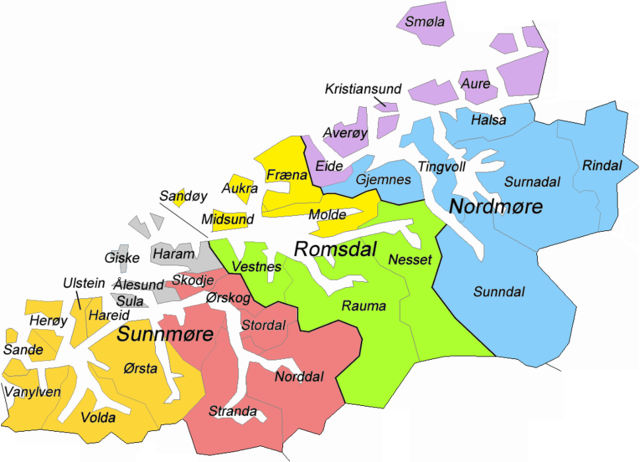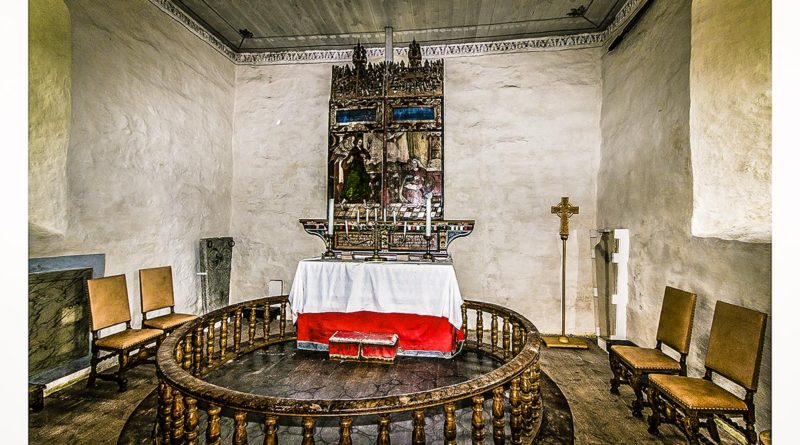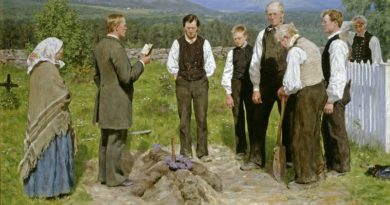Prosti – Deaneries in Norway
Looking at the deaneries in Norway, can help us when searching for locations.
In my article Church administration in Norway I wrote that the Prosti/Denary did not appear in the sources and thus, was not all that interesting to us genealogists. Knowledge about the deaneries may still be helpful to us.
Sometimes the information we got about our ancestor’s place of origin is vague. It may be a general area such as “Lofoten” or “Romsdal”. This is where knowledge about the Norwegian deaneries, may be of help. The deaneries are named and defined independently of the civil administrative units.
Let’s say all you know is that your Great Grandfather came from “Søre Sunnmøre”. Søre Sunnmøre is a very general description. I have lived in Møre og Romsdal county all my life. I can name a few municipalities that I know is in “Søre Sunnmøre”, but I can not tell for sure the boundaries of the area.
When searching for locations sometimes may seem like looking for the needle in the haystack, we can, by looking at the deaneries, narrow down the number of haystacks and look at the parishes most likely to yield results first.

You find an overview of the deaneries in Norway by going to Wikipedia Prostier i Norge. This webpage is in Norwegian, but you will only need to read the names of the deaneries listed by diocese. Scrolling down the page we recognise many names of areas used in Norway. We find “Søre Sunnmøre prosti” and when clicking on this we get the localparishes (sogn).
- Hareid
- Hareid sogn
- Herøy
- Herøy sogn
- Indre Herøy sogn
- Leikanger sogn
- Sande
- Gursken sogn
- Sande sogn
- Ulstein
- Ulstein sogn
- Vanylven
- Rovde sogn
- Syvde sogn
- Vanylven sogn
- Åram sogn
- Volda
- Austefjord sogn
- Dalsfjord sogn
- Kilsfjord sogn
- Volda sogn
- Ørsta
- Hjørundfjord sogn
- Storfjorden sogn
- Vartdal sogn
- Ørsta sogn
List from Wikipedia
On a Facebookgroup I belong to someone asked about her ancestor who came from the “Lofoten Islands”. Based on the knowledge of the deaneries I could recommend that she started out searching these localparishes (sogn):
- Flakstad
- Flakstad sogn
- Moskenes kommune
- Moskenes sogn
- Vestvågøy
- Borge sogn
- Buksnes sogn
- Hol sogn
- Stamsund sogn
- Valberg sogn
- Vågan
- Gimsøy og Strauman sogn
- Henningsvær sogn
- Strandlandet sogn
- Svolvær sogn
- Vågan sogn
List from Wikipedia
If you go to the Find source feature in the Digital archives and search for any of the localparishes (sogn) listed, will get you to the sources for that area. Prior to about 1812 many localparishes was recorded in the same churchbook.
I started out by writing that the knowledge of deaneries may help you. There are different things to keep in mind though:
- The names and boundaries of the different deaneries, parishes and local parishes (may) have changed over time. You may want to look at my article Old boundaries in Norway.
- Our ancestors not paying attention to parish-, and deanery boundaries, may have define the area they lived in differently from what others did/do.
So, if nothing promising turns up in these focus areas, then plan B is to search adjacent areas.
Unfortunately it will take many years until all churchrecords in Norway are transcribed and searchable. Hopefully, when the information you got is scarce or vague, this approach can help us reduce the number of haystacks to search.
Please comment below or send me a word and tell me if you think this is of help. I am very happy if you share my blog with your fellow genealogists




